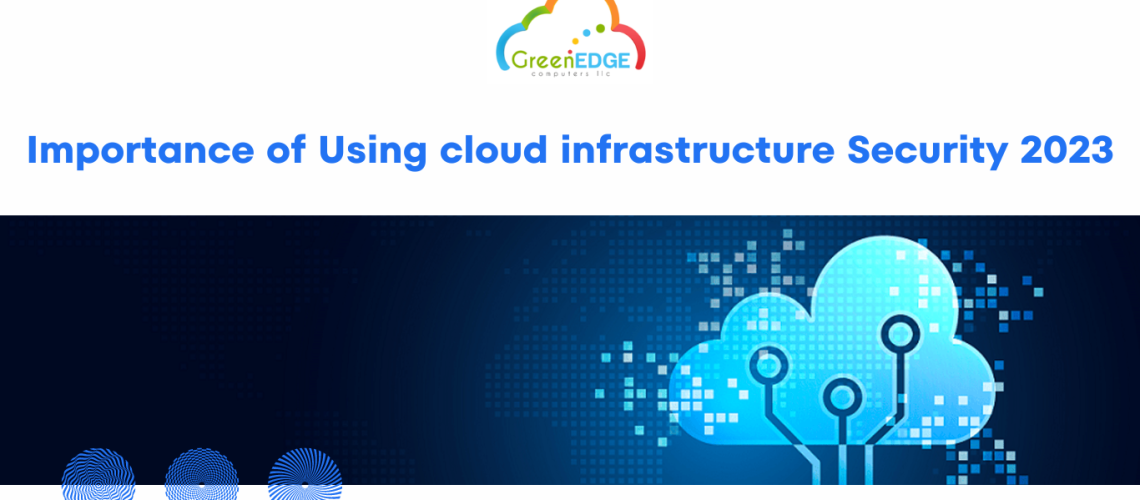Do you want to know about Cloud infrastructure security so this article is for you.
In simple words, Infrastructure security helps you to deploy in a cloud environment and it provides you with the best-supporting system.
Did you know? Infrastructure security is less vulnerable than public cloud because you can easily be exposed to this on public networks, and also it is not located behind a safe network perimeter. Due to the highly automated nature of the environment, hybrid cloud security is still very challenging. Numerous concerns about integration points with public cloud systems.
Also read: Top benefits of using Infrastructure Security 2023
What are the seven types of cloud infrastructure components?
For making Cloud infrastructure you should know at least 7 basic components, including user accounts, servers, storage systems, and networks. Cloud infrastructure security environments are dynamic, with short-lived resources created & terminated many times per day. That defines you to secure these building blocks in an automated and systematic manner.
Mostly, people also ask us why infrastructure security strategy is important. So, here is the full information.
Why is cloud infrastructure security strategy important?
In today’s cloud computing world, organizations lose their control over the security that they had in the past. Cloud security service providers have full control of their physical cloud security. Now, Companies do not have clear visibility, and also they lose control, over many reasons of SaaS protection.
The traditional type of infrastructure security framework simply does not work anymore. Save perimeter technologies and practices assume a physical network can be isolated from external threats. You should also know this in virtualized cloud infrastructure environments, the perimeter becomes meaningless.
With the help of four core objectives, cloud infrastructure security helps to protect organizations.
Also read: What is endpoint security and why is it important?
Provide and control access
Access is an advantage of the cloud, but now it becomes a weakness when “anyone” gets access. Cloud security strategies need technologies that allow authorized users to access the resources they need for their work while protecting unauthorized access.
Protect data
With the help of the right data policies, cloud security storage should be safer than on-premises data centers, making companies more resilient to natural disasters & other disruptions. Data retention policies minimize the amount of data at risk. Backup & data recovery policies help you to minimize the impact of disruptions and duration.
Prevent and mitigate attacks
Cloud security needs constant vigilance, especially when company resources live in the cloud. Companies must monitor the threat landscape continuously. Given the persistence & sophistication of modern cybercriminals, concentrating on prevention is not enough. Organizations need to monitor their cloud infrastructure security around the clock to mitigate security and identify breaches quickly.
Compliance
standards like SOC 2 and Regulations like GDPR require organizations to have effective IT controls for managing & protecting customer data. Demonstrating compliance needs systems that monitor conformity to security, procedure integrity, privacy, & other standards.
Also read: The importance of Cyber Security Awareness
Benefits of cloud security models
Implementing cloud infrastructure security helps you to improve your business. Security is very easy to manage, your company’s data is better protected, & business performance improves.
Centralized cloud security
Cloud security systems provide you with more visibility across your infrastructure. You can easily see employees’ attempts to add shadow IT. Automated monitoring systems identify configuration issues and suspicious activity, rapidly escalating problems that cannot be mitigated automatically.
Risk minimization
A unified approach to cloud security will help you to reduce your attack surface & minimize your cyber risks. Replacing provider-specific access controls with a central IAM system lets you apply granular, role-based access control rules. Data loss prevention, backup practices, and data recovery systems reduce the risk of lost data and limit the impact of ransomware. Better visibility and monitoring also help ensure you remain in compliance with data privacy regulations and AICPA controls standards.
Also read: Managed endpoint detection and response
Conclusion:
We hope you easily understand why cloud infrastructure is important and what is the benefit of cloud infrastructure security. If you want to know more about this or get the best security then feel free to contact us at Green Edge Computers.
Frequently Asked Questions
What is cloud infrastructure security?
Cloud infrastructure security refers to the measures taken to protect the cloud computing environment from security threats. It encompasses the security of the cloud provider’s physical infrastructure, the virtualization layer, and the applications and data that reside in the cloud.
What are some common cloud infrastructure security threats?
Common cloud security threats include data breaches, insider threats, DDoS attacks, man-in-the-middle attacks, & data loss.
How can I secure my cloud infrastructure?
There are many steps you can take to secure your cloud infrastructure, including:
- Choose a reputable cloud provider that has strong security measures in place.
- Implement multi-factor authentication to reduce the risk of unauthorized access.
- Encrypt your data to protect it from theft or unauthorized access.
- Implement a firewall to control network traffic.
- Regularly monitor and audit your cloud infrastructure for vulnerabilities and threats.
What is identity and access management (IAM) in cloud infrastructure?
IAM is the process of managing & controlling access to cloud resources. It involves identifying & authenticating users, authorizing access to resources based on roles & permissions, and confirming that access is revoked when necessary.



